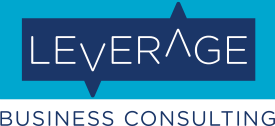Success-oriented management of customer-focused organizations eventually get to a point where they begin asking themselves two very important questions. As a leader, what should I know about process improvement? And how do I know if I have the right processes to run my business?
When it comes to process analysis and improvement, there is a cornucopia of methods and tools that various practitioners advocate. Some are more recent and trendy (Process “Automation as a Service”, AaaS for example) while others, such as Lean, Six Sigma and Business Process Management, have been in continual use for decades.
I often get asked the question, “As a leader, how do I go about improving processes across my organization?” First, I appreciate that such an effort can appear daunting and complicated, especially without an obvious starting point. However, the approach to improving processes depends on what the leader is trying to achieve. Perhaps there is a new focus on profitability, issues from customers have surfaced, or new systems investments require upfront process review.
That said, there is a timelessness to certain principles. That consistency has allowed me to distill two decades of experience in business consulting into five core tenets of process improvement that are practical at all levels.
Leverage Business Consulting’s 5 Basic Principles of Process Improvement:
- Process improvement efforts require laser focus on the customer (or the main beneficiary of the product or service ultimately delivered). Although internal activities, taken as a whole, serve the end customer, an overly inward focus works to the detriment of the organization. In everything businesses do, even several layers removed from direct customer interaction, employees should always understand how their work affects the outcome.
- Facts and data should substantiate the process or activity that has been identified for improvement. All too often, the squeaky wheel receives the most attention, whether it actually needs it or not. When anecdotal stories are set aside and quantitative facts are used to describe the issue, it can uncover the reality of where resources need to be invested.
- Emphasis should be placed on removing inefficiencies from the work performed, while generating more value. Consider the achievement of “doing more with less”, similar to creating operational leverage. This idea is so important that Leverage Business Consulting actually takes its name from this principle.
- A structured and disciplined approach will deliver the greatest impact. Having a project-based method is fundamental to improving and measuring what an organization delivers its clients. Important steps along the way include documenting and analyzing the process, understanding sources of performance shortfalls, identifying solutions and implementing the improvements – doing this successfully requires a structured, disciplined approach
- Process standardization fuels growth, while variation and unnecessary nuances cause rework, disruption and impede scalability. Process standardization also supports delivering a consistent customer experience, easier cross-training and a swift hand-off to the next stage of the value chain. Core processes, whenever possible, should be standard and consistent across individuals, teams and locations.
These five tenets are a great place for leaders at the helm of a process improvement effort to start. Change does not come easily, however, and an unbiased eye often sees things much more clearly those very closely involved are able. For more detailed guidance, tailored to a specific organization’s needs and goals, the services of an experienced business consultant are invaluable.

